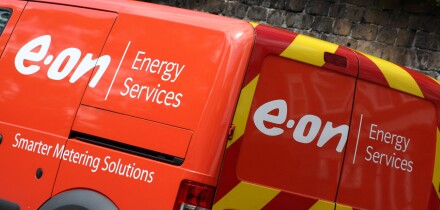As environmental, social and governance factors surge to prominence across global capital markets, it sometimes feel like the US securitization market is late to the game.
Although a Bank of America survey of securitization investors in March found that 59% of buyers pay attention to ESG factors, total labelled ABS issuance since records began totals just $42bn. Even in a record 2021 for labelled ABS, these trades accounted for just $12.71bn of the $285bn priced overall.
In part, this is down to the very nature of structured finance. A corporate or sovereign green bond is underpinned by a simple principle: that the issuer will use the money for sustainable purposes. Defining a securitization as green is a more challenging proposition.
“The challenge is about finding a framework that fits structured finance specifically,” says Stephanie Mah, senior vice president in global structured finance at DBRS Morningstar. “On the asset level, for example, there is a lack of tangible data to illustrate what's being done or achieved.”

Elana Lipchak, ABS strategist at Bank of America, highlights that, when investors carry out ESG evaluations for equity or corporate investments, they are looking at the business operations of a specific company.
“In the securitization market, investors need to consider the collateral of the securitization pool along with the various transaction parties such as the originator and servicer,” she says.
Structured finance bankers also highlight that the lack of clarity on how to integrate ESG leaves them vulnerable to chatter around greenwashing, making issuers reluctant to label their transactions.
“There's a focus from the SEC on greenwashing, and we don’t see many deals actually labeled as ESG,” says Robert Villani, a partner at Clifford Chance in structured capital markets.
Playing catch-up
With no real agreement on a framework, the decision of whether a deal is up to ESG standards comes down to individual investors.
“Because there are no uniform standards, there will be some disagreements between the investors and the issuers whether a deal can be considered ESG,” says Maxim Berger, director at KBRA focusing on consumer ABS. “Some of the investors are using their own framework to determine this.”
Melvin Zhou, also of KBRA, says a uniform framework “would provide clarity, which could help bolster the number of deals and increase adaptation”.

Some in the market are looking across the Atlantic to guidance, as ESG is the one aspect of securitization where Europe leads the US.
“There is a very rigorous, well built-out regulatory framework in Europe that has been in the works for many years,” says Lipchak at Bank of America. “The US is not at the point where Europe is in terms of building green or ESG rules and regulations."
Part of this is down to investor behaviour, as European accounts are more demanding on ESG than their US counterparts, notes David Nochimowski, head of global CLO and ABS strategy at BNP Paribas. This has led the European CLO market to be more focussed on the issue than the US.
However, Nochimowski sees the US CLO market “slowly catching up, with greater inclusion of ESG terms in legal documents and a greater proportion of borrowers endorsing ESG standards”.
“In Europe, there's been a big push around ESG last year, and the US is starting to replicate the European momentum,” says the strategist.
The Bank of America survey in March certainly suggests that buyers of securitized products do have an interest in the topic — though they would like issuers to make their lives easier. Some 76% of investors surveyed said that they think issuers should focus on standardizing disclosures and key reporting metrics.
Of the 27 securitization issuers asked by Bank of America, 38% said that they already disclose ESG information in offering documents or registration statements, while 24% disclose ESG data and metrics on an ongoing basis. But such is the variation of asset classes within the world of securitized products that each sector poses a different challenge.
“One of the biggest challenges is we don't have a lot of ESG related data or disclosures in the securitization market at the moment,” says Lipchak, “so, it’s difficult for investors to make ESG evaluations.
“The data needed really depends on the asset class. And that's why market participants are looking for a tailored disclosure framework, depending on the asset class.”
An SEC proposal announced in March, which would require companies to disclose certain climate-related information including climate risks and greenhouse gas emissions, does not apply to asset-backed issuers. But Lipchak says there are starting to be “more issuers that want to provide additional data to the investor base to help ESG evolutions”.
What climate-related disclosures will be required from ABS issuers is still up for debate, but industry body the Structured Finance Association has warned against demanding data that could bring concerns for consumer privacy. This is something that government-sponsored Fannie Mae is treating with its own attempts to provide further data. In August, Fannie Mae laid down a proposed methodology that would offer information to socially conscious investors while mitigating data privacy concerns around mortgage borrowers.
Opportunities abound
Fannie Mae is already a leading ESG player in the market, and is in fact the largest green bond issuer in the US having surpassed $100bn of green mortgage-backed securities issuance in December 2021. This suggests that ESG-themed issuance in securitization in major scale is certainly possible, even if it is easier in more obviously green sectors.
“There are asset classes that are being developed and are becoming more popular that appeal to investors who are trying to make investments that meet their ESG criteria, such as solar panel loans,” says Villani of Clifford Chance.
So while there is still some way to go before there’s agreement on the best way to define ESG securitizations, there is hope for growth in certain assets that clearly qualify as green with or without frameworks.

One major reason for optimism is the Inflation Reduction Act, signed into law by US president Joe Biden on August 16, which will provide tax credits for energy-efficient home improvements and electric cars. This could increase the pool of assets for ESG securitization.
“The Inflation Reduction Act will potentially provide support for certain areas, for example, clean vehicles and the solar market, where we will see an increase in origination and collateral that can be securitized and financed through the securitization market,” Lipchak says.
Solar ABS has already been booming, and registered a record 2021 in the US, with 13 deals totaling just under $3.6bn. With the exception of 2021, when green data centre and auto deals suddenly appeared, solar has accounted for over 50% of green ABS issuance in the US every year since 2017.
Discerning buyers
Yet labelled deals are, of course, only one way to judge to what extent ESG is being incorporated into a capital market. And there are signs that investors themselves are being more sophisticated.
“We used to see more negative screening, with the exclusion of some industries and sectors within deals, such as tobacco and weapons,” says Nochimowski at BNP Paribas. “We’re now shifting into more positive screening, where securitization sponsors will need to come up with their own scoring system to ensure compliance with ESG standards and sometimes include some tests to track within the structure.
“We have seen this switch from negative screening to positive screening at the end of last year in Europe, and we should see the same trend in the US.”
Some 41% of respondents to the Bank of America survey said that they used negative screening methods as an investment strategy, versus 25% using positive screening methods.
Mah of DBRS also says that investors’ thought processes are developing fast.
“The attention has been shifting away from how people invest, to migrating to the outcomes of those decisions, thinking proactively about how certain actions affect the environment, how our dollars can serve as a catalyst for change,” she says.
As investors take the subject more seriously, it leaves open the question that sustainable finance bankers find themselves having to answer across all asset classes: is there any financial benefit for issuers boasting stronger ESG credentials?
For now, securitization bankers consider this hard to assess, but the examples they have seen of better pricing have tended to come further down the capital stack in BBB or BB rated tranches.
“There is dedicated ESG money looking at some of those opportunities,” said one senior structured finance banker. “At the top of the capital stack, we don't see there being a difference, but there are some small examples of subordinated bonds and deals that seem to have done better with ESG qualifications.”
It may be easier for investors to focus on the issue if markets return to something like normality after a torrid 2022.
“Investors are also really worried about performance in their investment returns,” says Nochimowski at BNPP. “As soon as there's more price stability, I think that interest in ESG is going to grow even stronger.”







